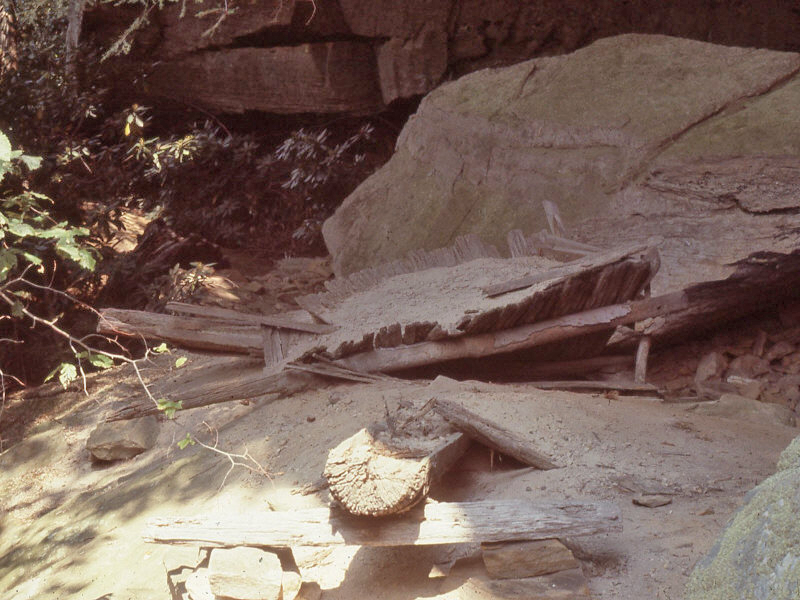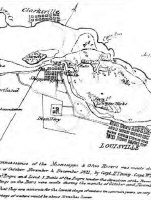Saltpeter and Gunpowder

“An Early Gunpowder Mill in Louisville, Kentucky.” The Millstone, Kentucky Old Mill Association 16 (Spring 2017): 40-46. This article provides the history of the Phoenix Powder Mill, located on Corn Island in the Ohio River opposite Louisville, which operated from ca. 1820 until destroyed in an explosion in 1830.
“Rock-Shelter Saltpeter Mines of Eastern Kentucky.” Historical Archaeology 48(2, 2014): 91-121. With A.I. George. This article provides an analysis of saltpeter mining operations carried out in sandstone rock shelters of eastern Kentucky during the early nineteenth century. The study drawing upon archaeological reports submitted by U.S. Forest Service archaeologists and describes the nature of the industry and associated archaeological artifacts and other evidence.
“Bibliography of Niter Mining and Gunpowder Manufacture.” Ohio Valley Historical Archaeology 16 (2001):1-128. With D.B. Ball. Despite being among the nation’s earliest significant chemical industries, the mining of niter from caves and rock shelters and processing of saltpeter and the related manufacture of gunpowder during the American Revolution, War of 1812, and Civil War are unappreciated by many historical and industrial archaeologists. Though emphasizing sources relating to the production of black powder, materials relating to guncotton and smokeless powder are also included. This extensively annotated bibliographic listing likely constitutes the most extensive bibliographic listing and sourcebook for these industries currently available and will be of interest to historic and industrial archaeologists, military and chemical historians, historic preservationists, and speleologists.
“The Foley Family and Their Role in Gunpowder Manufacture.” With N.F. Johnson. In Stottman, M.J. and C.D. Hockensmith, “Archaeological Investigations at the 1795 Elijah Foley House, Fayette County, Kentucky,” 268-273. In Current Archaeological Research in Kentucky. Volume Five. Hockensmith, C.D., C. Carstens, C. Stout, and S.J. Rivers, ed., 265-313. Frankfort, KY: Kentucky Heritage Council, 1999). This paper presents the results of salvage excavations at the Elijah Foley House near Lexington, Kentucky. Foley, an early gunpowder manufacturer, built a two-story brick residence on his property about 1795. The diverse artifact assemblage at this site was representative of the entire occupational span of the house. Although the site had been disturbed by construction activities for a new subdivision, it still provided an excellent assemblage of an early rural farmstead. I assisted with the excavations and contributed a history of the Foley family as a section within the larger article.
“Saltpeter Manufacturing and Marketing and its Relation to the Gunpowder Industry in Kentucky during the Nineteenth Century.” In Historical Archaeology in Kentucky, ed. K.A. McBride, W.S. McBride and D. Pollack (Frankfort: Kentucky Heritage Council, 1996), 67-105. This article provides a detail examination of the saltpeter industry in Kentucky during the nineteenth century. Special attention is focused on the early 1800s and the importance of Kentucky saltpeter during the War of 1812, when Kentucky was the most important producer nationally. Production processes, location of saltpeter mining areas, marketing practices and factors, and key players in the Kentucky trade are discussed.
“The Saltpeter Works at Mammoth Cave and the New Madrid Earthquake.” Filson Club History Quarterly 66 (January, 1992):5-22. With A.I. George. Mammoth Cave, Kentucky, was one of the largest producers of saltpeter during the era of the War of 1812, where a factory system employing hundreds of enslaved workers operated. The mining and processing operation at the cave was severely disrupted by the New Madrid earthquakes of 1811-1812, which afterward was unable to recover to its former peak production.
“Great Saltpetre Cave.” In Rockcastle County, Kentucky, and its People. (Waynesville, NC: Don Mills, 1992), 44. Great Saltpetre Cave in Rockcastle County, Kentucky, which operated during the era of the War of 1812, was the largest single producer of saltpeter in the state and, during the twentieth century, was exhibited as a show cave in conjunction with John Lair’s Renfro Valley country music enterprise and tourist attraction. The article provides a brief overview of the cave from its discovery in 1798 through the modern era.
“Saltpeter Mining in Rockcastle County.” Mount Vernon Signal, 7 May 7, 1992, sec 2:1. This article provides an overview of the mining and processing of saltpeter, used to make gunpowder, the history of the industry in America during the nineteenth century, and the significance of Rockcastle County caves such as Great Saltpetre.
“The Trotter Family, Gunpowder, and Early Kentucky Entrepreneurship, 1784-1833.” Register KHS 88 (Autumn, 1990):394-430. During the early nineteenth century, Samuel Trotter and his brother George operated the largest wholesale/retail mercantile business in Lexington, Kentucky. In 1810, Samuel established a powder mill west of the city which would become the largest gunpowder producer in the state. This article provides a detailed examination of Trotter family history, the operation of the Trotter powder mill, and gunpowder manufacturing during the War of 1812 and subsequent decline of the industry.
“A Sketch of the Saltpeter Manufacturing Millennium in World History.” Journal of Spelean History 24 (Oct-Dec, 1990): 22-31. This article provides an overview of saltpeter production and gunpowder manufacture over a period of 1,000 years, from the discovery of gunpowder by Chinese alchemists in about the 9th century CE, the subsequent diffusion of the technology into Europe, gunpowder production in America from the Revolution through the Civil War, and the decline of black powder manufacture during the later nineteenth century in favor of guncotton and smokeless powder.
“Bluegrass Powdermen: A Sketch of the Industry.” Register KHS 87 (Spring, 1989): 99-117. During the early nineteenth century, Lexington, Kentucky, was the transportation hub of the state and central to the surrounding saltpeter production area, thus becoming not only the market center for the saltpeter trade but also hosted a cluster of gunpowder mills. This article provides an examination of the industry and of the region’s powder mills.
“The Spencer Cooper Powder Mill.” Journal of Spelean History 22 (Apr-Jun, 1988): 12-14. In 1818, the Reverend Spencer Cooper established a powder mill on a tract of land adjacent to the large gunpowder operation of Samuel Trotter, which operated until about 1839. This article uses newspaper accounts and the manufacturers census of 1820 to provide a detailed analysis of the Cooper mill operation












